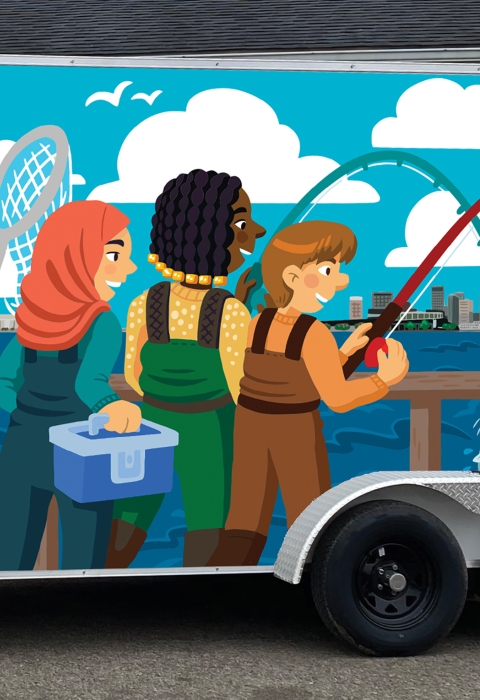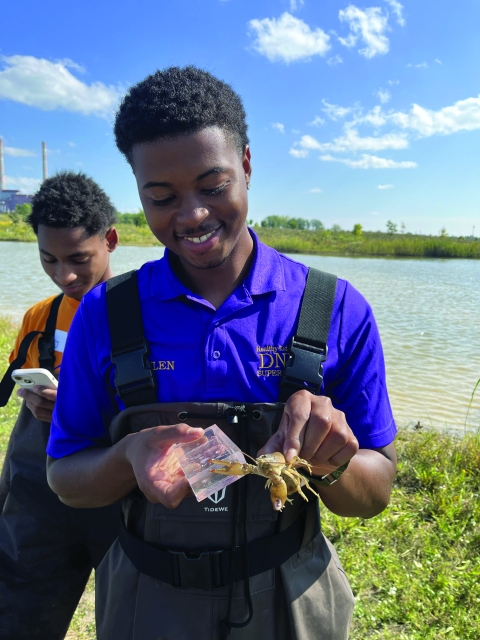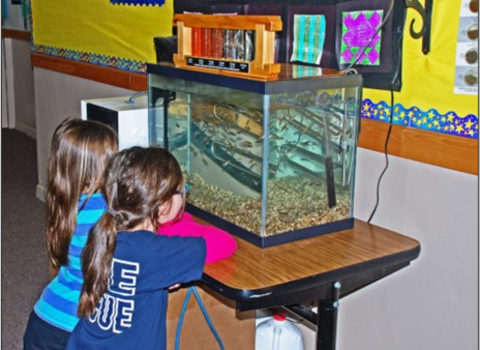Outside of Detroit, a city renowned for its vibrant culture and rich history, a unique program named the Detroit River Youth Fishing Team, known as DRYFT for short, has been making waves. The brainchild of Jody DeMeyere, Paige Wigren and Nicole LaFleur, DRYFT was born out of a shared passion for the outdoors and a commitment to service. They saw an opportunity to make a difference and wrote grants to fund the programming and positions that would bring the program to life.
DRYFT's lifeline came through two crucial Great Lakes Restoration Initiative grants thanks to: DeMeyere, the visitor services manager at Detroit River International Wildlife Refuge; Wigren, a former U.S. Fish and Wildlife Service employee and now the lead outdoor education program specialist for Girl Scouts of Southeast Michigan; and LaFleur, the executive director of the International Wildlife Refuge Alliance. These grants not only funded the program, they also supported the hiring of three dedicated park rangers at the refuge who were instrumental in facilitating the program's activities: Maddie Drury, Alex Gilford and Erika Van Kirk. This initiative, aimed at providing positive outdoor experiences, has been a shining example and provides learning opportunities for underserved communities.
The DRYFT story is one of community, strength and the transformative power of nature. It began as a collaborative effort with organizations like the U.S. Fish and Wildlife Service, Girl Scouts of America, Detroit Outdoors, various local schools and community groups. The primary goals for the program were to serve traditionally underserved communities, connect people to their local watershed, teach the importance of native versus invasive species invasive species
An invasive species is any plant or animal that has spread or been introduced into a new area where they are, or could, cause harm to the environment, economy, or human, animal, or plant health. Their unwelcome presence can destroy ecosystems and cost millions of dollars.
Learn more about invasive species and foster an awareness of how human activities affect water quality.
The program has two aspects:
- Learn to Fish Experience: Youth learned to set up their fishing poles, understand their tackle boxes and then try fishing. This hands-on approach culminated in each participant taking home their gear, igniting a potential lifelong hobby.
- A Day in the Life of a Fisheries Biologist: This program delved into career pathways, fish identification and practical fieldwork, enabling participants to step into the shoes of a fisheries biologist for a day. Uniquely, our agency’s refuges and fisheries programs worked together to create this program, with participants learning alongside a fisheries biologist and park ranger.
Participants were from Hamtramck High School, Cesar Chavez Academy and local Girl Scouts. Each brought their unique background and perspective but shared a common curiosity about fish and wildlife.
The participants learned to rig fishing lines, tie knots and cast. The moment a youth felt the tug of their first catch, a sense of achievement and connection to nature was evident. Success was measured not just by participation numbers and geographic reach, but also by the personal stories and progress of the participants. The program’s impact has been encapsulated by moments like a child’s excitement at catching a fish as big as her torso or the joy of a participant flossing after finally catching a fish.
"The power of DRYFT programming lies within the small experiences: touching a worm, releasing a fish, feeling that first tug on the line," said Van Kirk, and is one of the driving forces behind the program.
These moments are the building blocks of a deeper connection with nature and a gateway to greater confidence in exploring the outdoors. Each member was given their own fishing equipment, symbolizing a new skill and a newfound responsibility.
DRYFT’s reach extends beyond their local neighborhood. Utilizing a mobile trailer funded by the initiative, the program touches lives in a 100-mile radius. With a grant of $301,275 for the first year and an additional $300,000 initiative grant for the second year, the program has been able to expand and flourish. In Ecorse, Michigan, the participants, now more confident and skilled, became ambassadors of the program, sharing their knowledge and enthusiasm with others.
The story of DRYFT is not just about fishing. It's about building community ties and nurturing future stewards of the environment. As the program looks forward to expanding its reach, the bonds formed and the lessons learned by its participants stand as a testament to the power of community-based initiatives.
In Detroit, a city that has faced its share of challenges, DRYFT has had nearly 800 participants since its inception and the program stands as a shining example of what a community can achieve when it invests in its youth and its natural resources. It's a story of casting lines and connecting lives and it’s a narrative that continues to unfold with each new group of participants.





